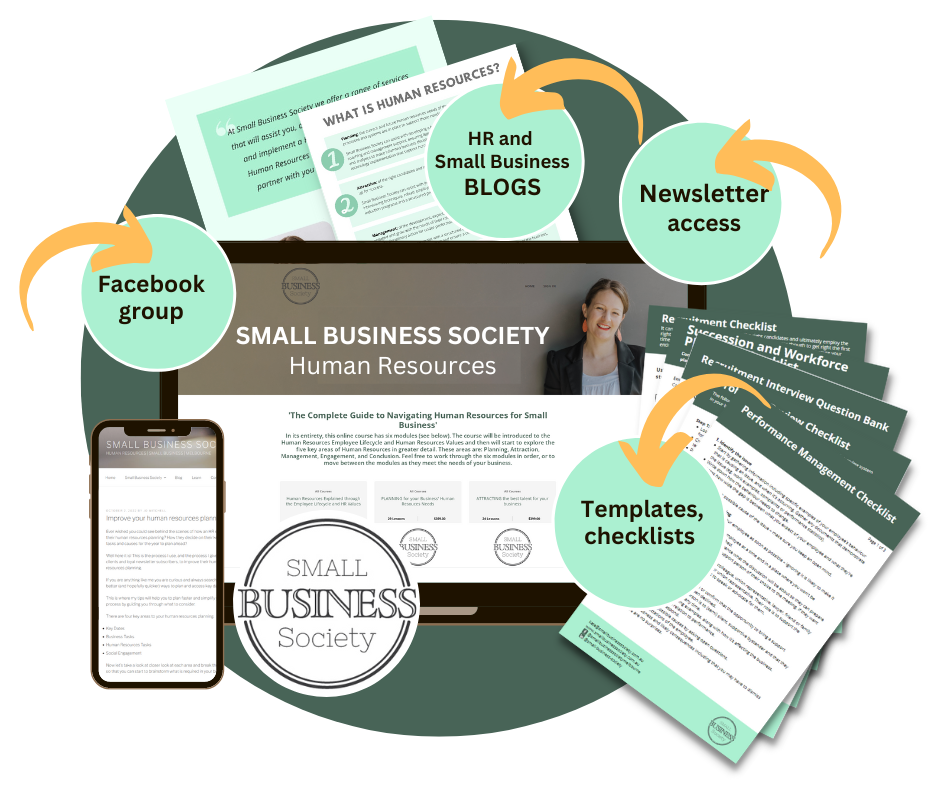5 Simple Inclusions For A Successful And Welcoming Employee Induction
Hiring a new staff member is an important decision for any business. You want to attract quality candidates with the right skills and experience who will work effectively within your team and your business, and you want an induction process which sets you and the staff member up for success. This all takes time, consideration and a good plan.
So, how do you plan for hiring a new staff member?
There are five simple steps to be ready for a best practice and compliant working relationship.
- Defining the position
- Creating the recruitment strategy
- Provide robust employment documentation
- Creating an induction program
- Set up the probation process
Defining the position
There are two parts to consider when defining a position.
The first part is to create a role that meets the needs of your business and your customer.
The second part is what type of candidate is available in the marketplace.
For the first part, creating a role that meets the needs of your business and customers, this includes:
- selecting the best employment type whether it be contractor or staff member,
- determining the number of hours required or the flexibility of a casual arrangement, and
- identifying any foreseeable changes to the business, job requirements or industry.
The second part is what type of candidate is available in the marketplace and meeting their expectations. You will need to understand,
- what a typical candidate looks like, including relevant skills and experience, as well as
- any relevant qualifications, licences or professional memberships the candidate might need to hold or be willing to obtain.
Once you have been able to define the requirements of the role and the candidate, you need to research a competitive salary and benefits package, including reference to any entitlements outlined in an applicable award or National Employment Standards.
Creating the recruitment strategy
It is worthwhile investing the time to determine the strategy and design of your recruitment program before you commence. By taking this time up front, you will more likely select the right candidate the first time, saving you time and money.
Your recruitment strategy should take into consideration;
- your advertising, including key messages about the role and the business,
- a consistent shortlisting process which identifies what the candidate must have and what you would be willing to teach, and
- a structured interview process which includes pre-screening phone calls, interview panels and any necessary testing or background checks.
Provide robust employment documentation
The successful candidate must receive a written employment contract which outlines the terms and conditions that form part of the employment relationship. A best practice contract provides,
- clear expectations for both the employer and staff member about specific clauses relevant to the role,
- reference to any applicable awards or legislation including National Employment Standards (NES), and
- salary package inclusions and other benefits such as leave entitlements.
It should also contain legally binding aspects to protect against common issues like privacy, non compete clauses, length of probation and notice periods for terminations.
In addition, the employment contract should be issued along with;
- supporting documentation including a fair work information statement,
- choice of superannuation fund,
- tax file declaration,
- new staff member details including personal details and bank details, as well as
- reference to relevant policies and procedures or a staff member handbook.
Lastly the supporting documentation should contain a copy of the position description. Each position should have a documented position description that is regularly reviewed to ensure expectations are clear and that the job design matches what you require.
The contract should be signed as acceptance of the offer prior to commencement and returned with all relevant supporting documentation to be kept in a secure staff file.
Creating an induction program
The induction program is the first real insight that a new staff member will have into your business. An engaging, welcoming and informative induction process will set you and your new staff member up for success.
The program needs to encourage your new staff member to imagine themselves as part of the team, learn about the business and connect with other staff members.
Creating an induction program involves;
- preparing a comprehensive induction checklist which lists what needs to happen prior their commencement and within their first few weeks,
- providing opportunities to engage other staff via morning tea over lunch or link them up with a buddy,
- including information that outlines your expectations clearly,
- looking for creative ways to make your induction different by the way you deliver the information,
- preparing welcome packs or a tour of relevant locations or meet and greets, and finally
- checking in regularly and asking for feedback.
Set up the probation process
Lastly, when hiring a new staff member, it is common practice to include provision for a probation period. This is an initial period of employment, which offers both the employer and the new staff member an opportunity to regularly review and formally discuss the role and its suitability.
Staff members will work much better when they are clear on the expectations of the role and the work environment. They will also feel more positive and focused about their contribution which will lead to a happier, and more settled staff member.
A probationary period gives a staff member the ability to assess if the job meets their expectations. Whilst the employer will gain an understanding of the individual’s skills, knowledge and personal attributes and if they are a good fit for the team, the business and its customers.
It will also provide a framework for regular meetings allowing for conversations to set expectations, receive two-way feedback and review training needs. These meetings should be held at the end of the first, second and third month. Where applicable it may also include sixth, ninth and twelfth month reviews.
By following these steps you will be able to provide a best practice and compliant approach to attracting and onboarding new staff members.
Contact Small Business Society for assistance with hiring your next staff member.
The information provided in this document is for your guidance only and is general in nature. It does not constitute as legal advice. It is the responsibility of the individual to seek legal advice where required.
Sign up to Small Business Society and receive our newsletter each month plus other great resources to assist you on your Human Resources journey.

Are your leaders the best they can be?
Sign up to Small Business Society and we will send you our FREE 8 point plan for effectively supporting and developing your leaders and managers.
FREE 8 point plan for successful leaders
About Kate Tongue
Kate Tongue is the founding Director of Small Business Society.
She is a qualified and experienced Human Resources professional with more than 10 years of experience across the private and public sectors.
Her particular interest and experience is in managing the employee life cycle, delivering process improvements, and Human Resource strategy.
Looking for more information on the various stages of the employee life cycle or Human Resources in general? The following may interest you.
Articles to assist you leadership development:
Develop successful leaders and managers
Help your leaders lead
For further articles to assist you with your staff engagement:
Effective employee engagement
Staff engagement through a healthy work environment
Do you know your Human Resources terms?
15 must know HR terms
Plus lots more information and advice:
Small Business Society Blog
